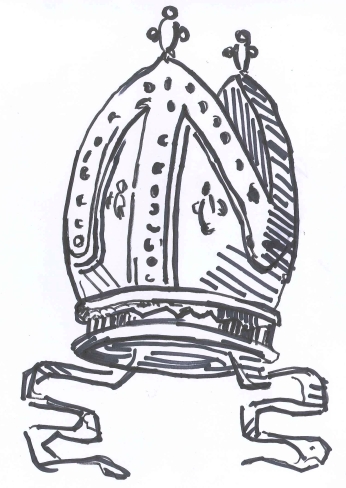Last week, well over 700 people tragically died in a stampede in Mina, a neighborhood outside Mecca where Muslims carry out a symbolic stoning as part of the Hajj. This stampede occurred in the deserts of Western Asia, but the word stampede originates near the deserts of the American West.

Stampede
According to the Oxford English Dictionary (OED), English took to stampede in 1823. It is first cited as a verb describing a herd of cattle becoming panic-stricken and taking flight. The earliest record the OED finds is in The Austin Papers, firsthand documents left behind by Moses and Stephen F. Austins’ efforts to settle Texas. The capital of the Lone Start State still remembers their name.
English took stampede from the Mexican Spanish estampida, a special usage of estampido, a “crash,” “bang,” “boom,” or “uproar.” With the initial e dropped by a process called aphesis, early forms of stampede show its Spanish origins still settling in: stampado, stampedo, stampido, and stompado. The latter, stompado, also appears in an early passage illustrating the sonic intensity that inspired the Spanish word. In his 1826 novel, Francis Berrian, Or the Mexican Patriot, Timothy Flint writes of wild horses:
Instantly, this prodigious multitude, and there were thousands of them, took what the Spanish call “stompado.” With a trampling like the noise of thunder, or still more like that of an earthquake, a noise that was absolutely appalling, they took to their heels, and were all in a few moments in the verdant depths of the plains, and we saw them no more.
As we so sadly saw in Mina, human stampedes don’t have “verdant depths of the plains” to flee to.
The connection of stampedes to humans occurred quickly, evidenced in the OED very soon after its original usage appears. Stampedes have also referred to gold rushes, rodeos, and, at US political conventions, rushes to nominate “the candidate who seems likely to win,” (OED) which clearly remains to be seen in the current race for the White House.
Stamp
Many scholars place the Spanish estampido in the Provençal estampar, “to stamp,” as in “to press” or “pound.” The word is common across the Romance languages, believed to have been borrowed from a Germanic root, *stamp-. The American Heritage Dictionary of Indo-European Roots sees this ultimately as a nasalized form of a Proto-Indo-European root, *stebh-, a “post” or “stem” in noun form, “to place firmly on” or “to fasten” in verb form. Staff, staple, step, stoop, and stump are also considered derivatives – as is stamp, as you probably originally guessed.
Like its Romance cognates, stamp has taken on a variety of meanings over the centuries. Today, stamp likely evokes postage or foot-pounding for English speakers. But the earliest record we have for stamp in the language actually refers to mortar and pestles. The OED has evidence for a form of stamp as early as 1000, a verb meaning “to bray in a mortar.” As the OED helps us out, the sense is “to pound” or “beat to a pulp.”
Let’s look not to the process but the product of a mortar and pestle, which has, for so long along our greater human pilgrimage, helped create medicine and nourishment – something that the many wounded in the stampede, or the many who have lost a loved one in it, well deserve.













